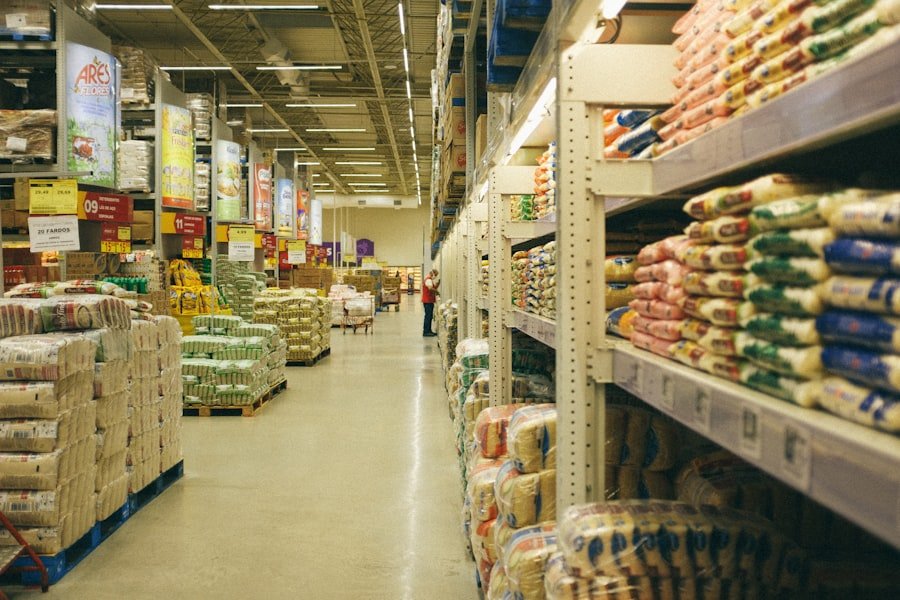In the rapidly evolving landscape of retail, hyperlocal retail analytics has emerged as a pivotal tool for businesses seeking to gain a competitive edge. This approach focuses on analysing data that is specific to a particular geographic area, allowing retailers to understand consumer behaviour, preferences, and trends at a granular level. By leveraging hyperlocal data, businesses can tailor their strategies to meet the unique demands of local markets, ultimately enhancing customer satisfaction and driving sales.
The rise of e-commerce and the increasing importance of personalised shopping experiences have further amplified the need for retailers to adopt hyperlocal analytics. Hyperlocal retail analytics encompasses a range of data sources, including foot traffic patterns, local demographics, weather conditions, and even social media interactions. This wealth of information enables retailers to make informed decisions about inventory management, marketing strategies, and customer engagement initiatives.
As consumers increasingly expect brands to understand their needs and preferences, hyperlocal analytics provides the insights necessary to create targeted campaigns that resonate with local audiences. The integration of this data into retail operations not only fosters a deeper connection with customers but also positions businesses to respond swiftly to changing market dynamics.
Summary
- Hyperlocal retail analytics focuses on gathering and analysing data at a very local level, such as specific neighbourhoods or even individual stores.
- Hyperlocal data in retail is important for understanding local customer preferences, trends, and behaviours, which can drive more targeted and effective marketing strategies.
- Technology plays a crucial role in hyperlocal retail analytics, enabling retailers to collect, process, and interpret large volumes of local data in real-time.
- Hyperlocal retail analytics can drive personalised customer experiences by allowing retailers to tailor their offerings and marketing efforts to the specific needs and preferences of local customers.
- Implementing hyperlocal retail analytics can lead to business growth by helping retailers make more informed decisions, improve customer satisfaction, and increase sales in specific local markets.
Understanding the Importance of Hyperlocal Data in Retail
The significance of hyperlocal data in retail cannot be overstated. In an era where consumers are inundated with choices, understanding the local context in which a business operates is crucial for success. Hyperlocal data allows retailers to identify specific trends and preferences that may vary significantly from one location to another.
For instance, a clothing retailer may find that certain styles are more popular in urban areas compared to suburban regions, prompting them to adjust their inventory accordingly. This level of insight enables businesses to optimise their offerings and ensure that they are meeting the needs of their target audience. Moreover, hyperlocal data plays a vital role in enhancing marketing efforts.
By analysing local consumer behaviour, retailers can craft targeted advertising campaigns that resonate with the community. For example, a grocery store might utilise hyperlocal analytics to determine which products are most frequently purchased by customers in a specific neighbourhood. Armed with this knowledge, the store can create promotions or loyalty programmes that cater directly to those preferences, thereby increasing customer engagement and driving sales.
The ability to connect with consumers on a local level fosters brand loyalty and encourages repeat business.
The Role of Technology in Hyperlocal Retail Analytics

Technology serves as the backbone of hyperlocal retail analytics, enabling businesses to collect, analyse, and interpret vast amounts of data efficiently. Advanced analytics tools and platforms allow retailers to harness data from various sources, including point-of-sale systems, customer relationship management (CRM) software, and social media channels. These technologies facilitate real-time data analysis, empowering retailers to make swift decisions based on current market conditions.
For instance, a retailer might use geolocation technology to track foot traffic patterns and adjust staffing levels accordingly during peak shopping hours. Furthermore, machine learning and artificial intelligence (AI) are increasingly being integrated into hyperlocal retail analytics. These technologies can identify patterns and trends within the data that may not be immediately apparent to human analysts.
For example, AI algorithms can analyse historical sales data alongside local events or weather patterns to predict future demand for specific products. This predictive capability allows retailers to optimise inventory levels and reduce the risk of stockouts or overstock situations. As technology continues to advance, the potential for hyperlocal retail analytics will only expand, providing retailers with even more sophisticated tools for understanding their customers.
How Hyperlocal Retail Analytics Can Drive Personalised Customer Experiences
One of the most compelling advantages of hyperlocal retail analytics is its ability to drive personalised customer experiences. In today’s retail environment, consumers expect brands to understand their individual preferences and tailor offerings accordingly. Hyperlocal analytics enables retailers to achieve this level of personalisation by providing insights into local consumer behaviour and preferences.
For instance, a coffee shop might analyse customer purchase patterns to identify popular drink choices within a specific neighbourhood. By leveraging this information, the shop can create targeted promotions or introduce new menu items that align with local tastes. Additionally, hyperlocal retail analytics can enhance customer engagement through personalised marketing efforts.
Retailers can utilise location-based marketing strategies to deliver tailored messages directly to consumers’ mobile devices when they are in proximity to a store. For example, a fashion retailer could send a notification about a limited-time sale on summer clothing to customers who frequently shop at their location during warmer months. This level of personalisation not only increases the likelihood of conversion but also fosters a sense of connection between the brand and its customers.
Implementing Hyperlocal Retail Analytics for Business Growth
Implementing hyperlocal retail analytics requires a strategic approach that encompasses data collection, analysis, and application across various aspects of the business. The first step involves identifying the key data sources that will provide valuable insights into local consumer behaviour. This may include demographic data, foot traffic analysis, social media engagement metrics, and sales performance by location.
Once these data sources are established, retailers can leverage advanced analytics tools to process and interpret the information effectively. After gathering and analysing hyperlocal data, retailers must integrate these insights into their operational strategies. This could involve adjusting product assortments based on local preferences or tailoring marketing campaigns to resonate with specific communities.
For instance, a home improvement store might discover that DIY projects are particularly popular in certain neighbourhoods during the summer months. Armed with this knowledge, the store could launch targeted workshops or promotions that cater to this interest, ultimately driving foot traffic and sales.
Overcoming Challenges in Hyperlocal Retail Analytics

While hyperlocal retail analytics offers numerous benefits, it is not without its challenges. One significant hurdle is the sheer volume of data that retailers must manage. With multiple sources of information coming from various channels—such as online transactions, in-store purchases, and social media interactions—organising and analysing this data can be overwhelming.
Retailers must invest in robust data management systems that can handle large datasets while ensuring accuracy and reliability. Another challenge lies in ensuring data privacy and compliance with regulations such as the General Data Protection Regulation (GDPR). As retailers collect more granular data about consumers’ behaviours and preferences, they must navigate the complexities of data protection laws while still delivering personalised experiences.
Establishing transparent data collection practices and obtaining consent from customers is essential for building trust and maintaining compliance.
The Future of Hyperlocal Retail Analytics
The future of hyperlocal retail analytics is poised for significant growth as technology continues to evolve and consumer expectations shift. One emerging trend is the increasing use of real-time data analytics powered by the Internet of Things (IoT). Smart devices equipped with sensors can provide retailers with immediate insights into foot traffic patterns and customer interactions within stores.
This real-time feedback loop will enable businesses to make agile decisions that enhance customer experiences on the spot. Moreover, as artificial intelligence becomes more sophisticated, its integration into hyperlocal retail analytics will unlock new possibilities for predictive modelling and trend analysis. Retailers will be able to anticipate shifts in consumer behaviour before they occur, allowing them to stay ahead of the competition.
Additionally, as sustainability becomes a growing concern for consumers, hyperlocal analytics can help retailers identify eco-friendly practices that resonate with local communities, further strengthening brand loyalty.
Leveraging Hyperlocal Retail Analytics for Competitive Advantage
In an increasingly competitive retail landscape, leveraging hyperlocal retail analytics is essential for businesses aiming to thrive in their local markets. By harnessing the power of hyperlocal data, retailers can gain invaluable insights into consumer behaviour and preferences that inform their strategies across various touchpoints. The integration of advanced technologies such as AI and IoT will further enhance these capabilities, enabling businesses to deliver personalised experiences that resonate with local audiences.
As retailers navigate the complexities of implementing hyperlocal analytics while overcoming challenges related to data management and privacy compliance, those who successfully harness this approach will position themselves for sustained growth and success. Ultimately, hyperlocal retail analytics not only empowers businesses to understand their customers better but also fosters deeper connections within communities—an essential ingredient for long-term success in today’s dynamic retail environment.
If you are interested in pursuing a career in finance, you may want to consider reading the article “10 Reasons to Consider a Career in Finance”. This article provides valuable insights into the benefits and opportunities that a career in finance can offer. Additionally, if you are looking to expand your business’s online presence, you should check out “Why You Should Create an Instagram Page for Your Business”. This article highlights the importance of using social media platforms like Instagram to reach a wider audience and increase brand visibility.
